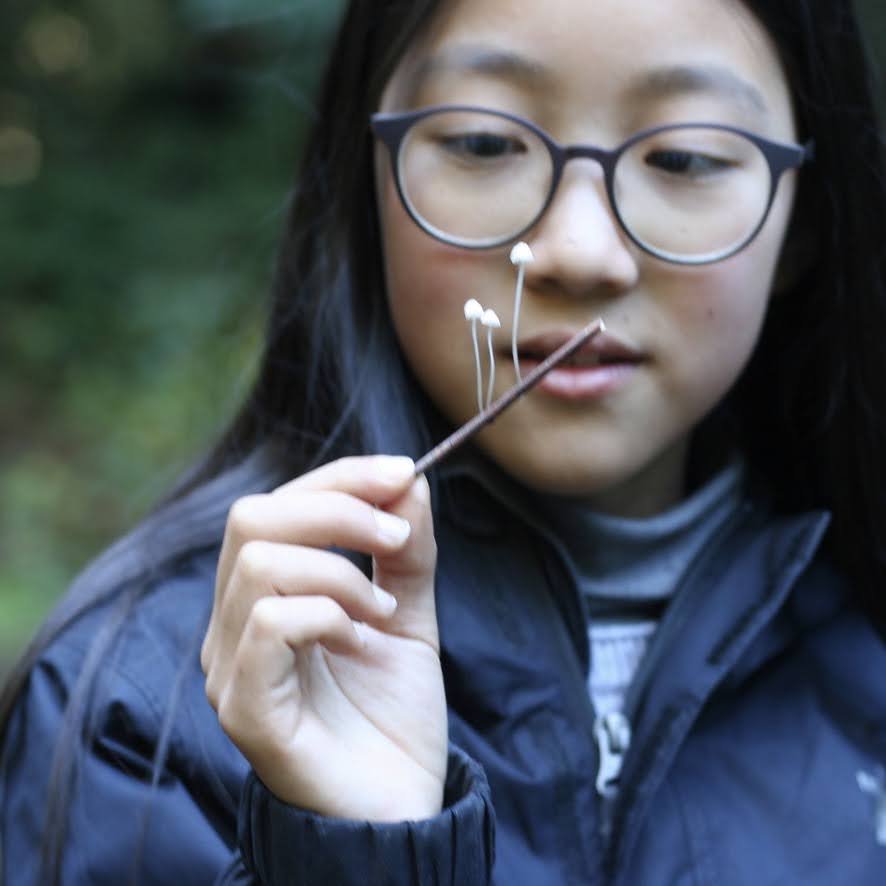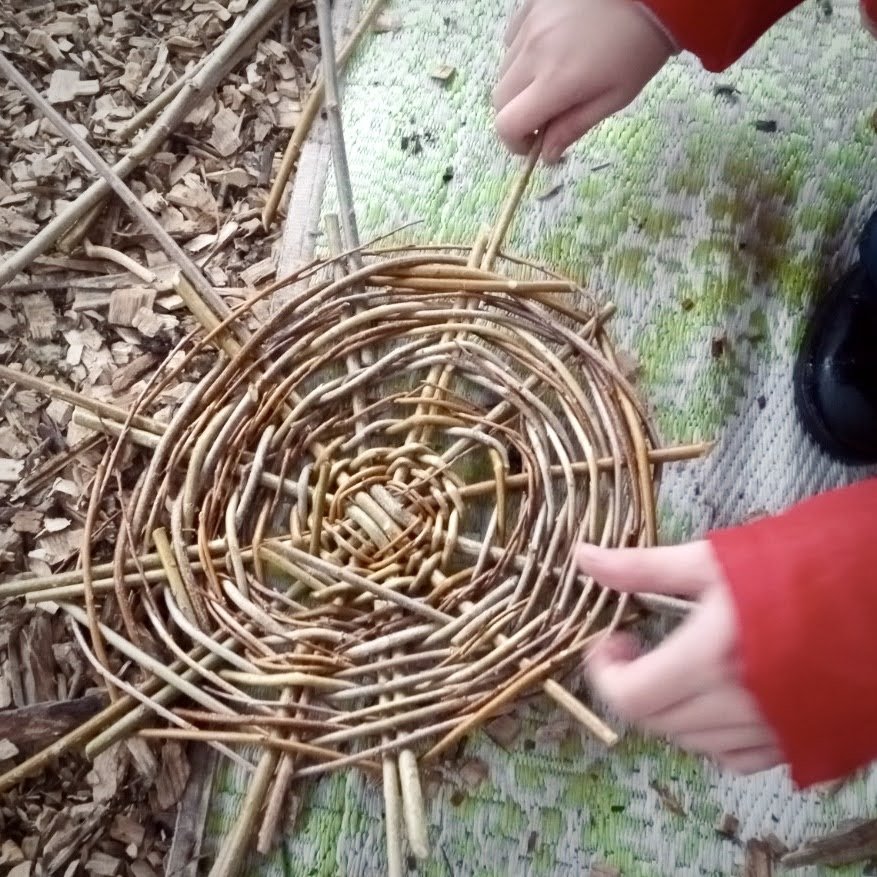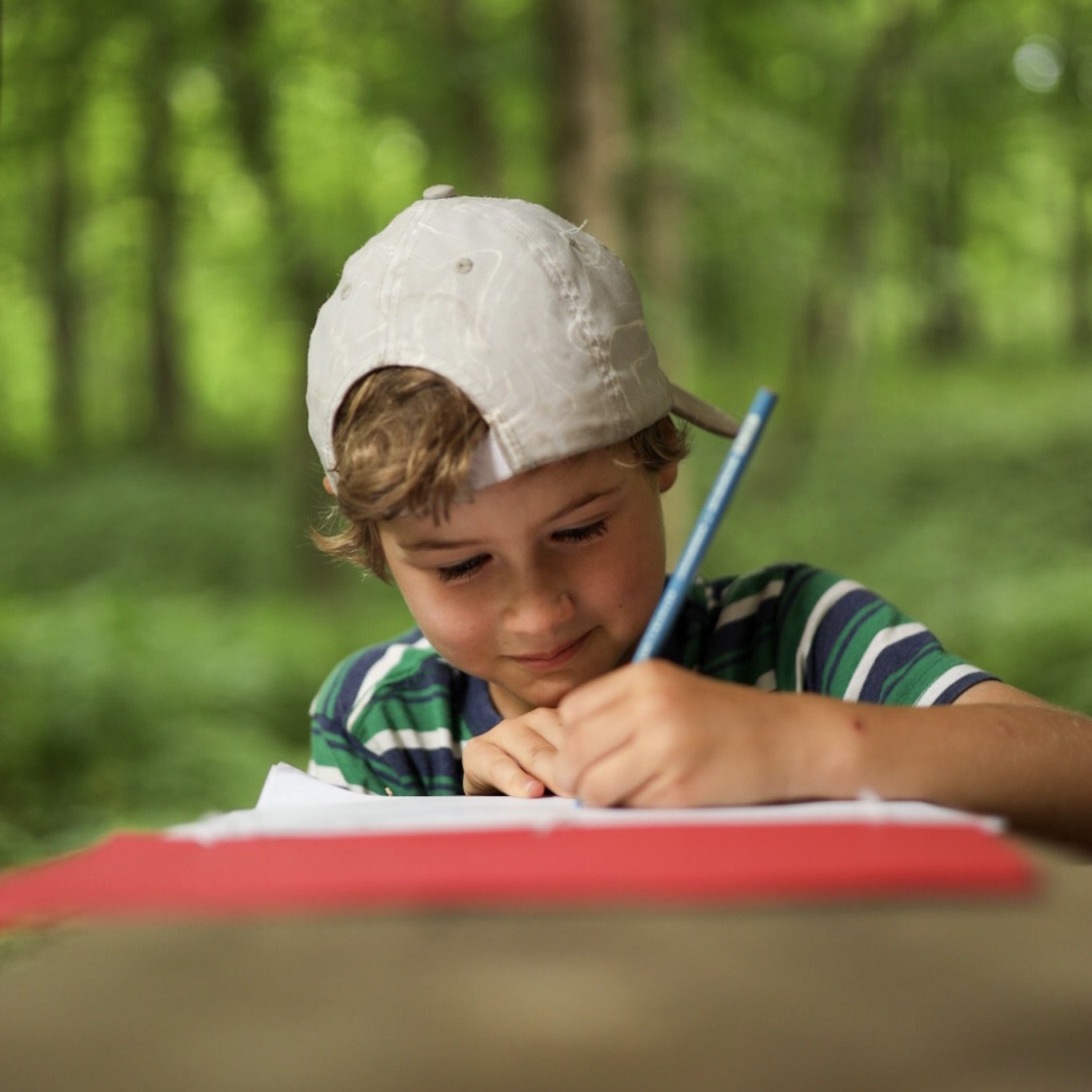At Red Oak Outdoor School we see the health and wellbeing of humans and the land as inextricably connected. This is reflected in our curriculum, where we draw on activities and practices that strengthen our relationships to ourselves, to each other, and to the land around us. Our curriculum is holistic by design, centered around activities that touch many aspects of our learning. Through hands-on interaction with the living ecosystem, we are invited into real-time problem solving, adaptability and resourcefulness, building not just knowledge but tangible and durable relationships with the plants, animals, elements, and seasons that make up our home place.
Outlined below are the core curricular elements we weave together to craft our days:
Curriculum & Philosophy
Naturalist Knowledge
There’s a Gary Snyder quote we love that says: “But if you do know what is taught by plants and weather, you are in on the gossip and can feel truly at home.” Through learning how to identify the shapes of trees, the plants, bird songs, and animal tracks, we begin to understand their characters and relationships, pulling together the various threads that weave a profound sense of place.
Hand Crafts
At Red Oak we keep our hands busy. We weave baskets from willow, shape bowls from clay, make beads from elderberry stalks, spin cordage from basswood fibers, and carve spoons from walnut limbs. We follow Kat Anderson’s adage that “Use breeds intimacy,” knowing that each of these crafts and skills builds embodied, functional relationships with the land around us. An integral part of our time together, crafting supports us in finding calm and quiet as a group, strengthens our hand-eye coordination, and gives chances for creativity to flow.
Survival Skills
Whether through building a shelter, making a friction fire, harvesting wild food and medicine, orienteering, or working together as a team, the challenge inherent to survival skills offers rich terrain for us to find our own abilities as well as practice collaboration and focus. Survival skills add yet another layer to our intimacy with the landscape—learning where to find the best patch of hopniss tubers or dry tinder for a fire—and allows us to discover for ourselves that what we need to live is provided by the land around us.
Games & Sensory Activities
We believe learning takes many forms, and that we are most able to learn when we are having fun! Each day at Red Oak tends to involve some amount of running, hiding, stalking, sneaking, or camouflage. Beyond being excellent doorways into attention and focus, games and sensory activities strengthen our physical awareness, helping us to feel more at home in our bodies and at ease knowing we are capable of responding to the world around us. Many of the games that we play also bring aspects of what is happening on the land around us into a felt experience for the players, whether that’s cardinals relying on each other for safety or squirrels in search of a few more acorns at the end of autumn’s harvest. Games bring playfulness into our days, invite us out of our comfort zones, and support an embodied way of learning.
Storytelling
Whether through an old myth told over snack-time or sharing highlights from a morning split into small groups, stories give depth and richness to our experience. They have the ability to carry us across time and space, teach us how to do new things in fun and engaging ways, give us friends and allies who show us that we are not alone in our experiences, and ultimately help us make meaning of the world around us. We tell stories often at Red Oak, grateful for the way they invoke the many ways of seeing and knowing and for the imagination and magic they bring into our days.
Music & Creative Expression
Music and creative expression are a steady undercurrent to everything we do at Red Oak, whether it’s singing back to the chickadee when he calls in our morning circle, playing improvisation games, making instruments from the land, learning to sing in harmony, or writing songs while we build shelters or harvest acorns. These forms of creativity help us to welcome our whole selves, give us permission to take risks, and invite us to practice saying yes to ourselves and to each other. Music gives a chance to collaborate and listen as we bring our voices together, adding our songs to the many around us. Singing is an ancient form of human connection that helps us to remember on a cellular level that we are not alone.
Emotional Literacy
Opportunities to reflect on our experiences are built into each day in both structured and unstructured ways, supporting us to express ourselves and our needs and to discern what we feel and communicate it to others. We see feelings, and conflict when it arises, as helpful pointers letting us know what is important to each other, and which can bring about deeper understanding of ourselves and others especially if tended to and explored with compassion. We strive to make a space that welcomes whole people, experiencing the world together in all of our unique ways.
Free Play
Throughout and around the other elements of the curriculum, we make space for our imaginations to roam and our curiosity to lead us towards the unexpected. In our days together, we prioritize free play and unstructured time as invaluable space for discovery, growth, creativity, and joy, where each person is guided toward their own innate learning edge.
Core Routines
Central to the Red Oak curriculum is a set of practices or routines that we return to consistently. These routines set a rhythm to our days that offer a sense of orientation and grounding, and grant the opportunity to build skills through repetition and practice.
Sit spot
The simple ritual of returning day after day to the same place, making ourselves comfortable, and practicing observation.
Tracking & Bird Language
Studying the patterns in animal communication and the stories left in the mud and snow, growing our ecological awareness, and illuminating the web of relationships on the land.
Animal forms
Getting out of our human bodies to feel how it might be to be a raccoon or a nuthatch, helping us to sharpen our observations, shake up our perspective, learn with our bodies and build empathy.
Journaling
A practice in observation, communication, and creativity! Journaling helps us to integrate what we are learning.
Story of the Day
Circling at the end of the day to share highlights and learnings, giving us a chance to speak and listen to each group member.
Mapping
Using the bird-eye-view as a way to draw connections, notice patterns, and bring our attention to the bigger picture.
Wandering
Making time to wander on the land and see where the day takes us, making room for the unexpected and allowing curiosity to lead the way in direct conversation with the land.











